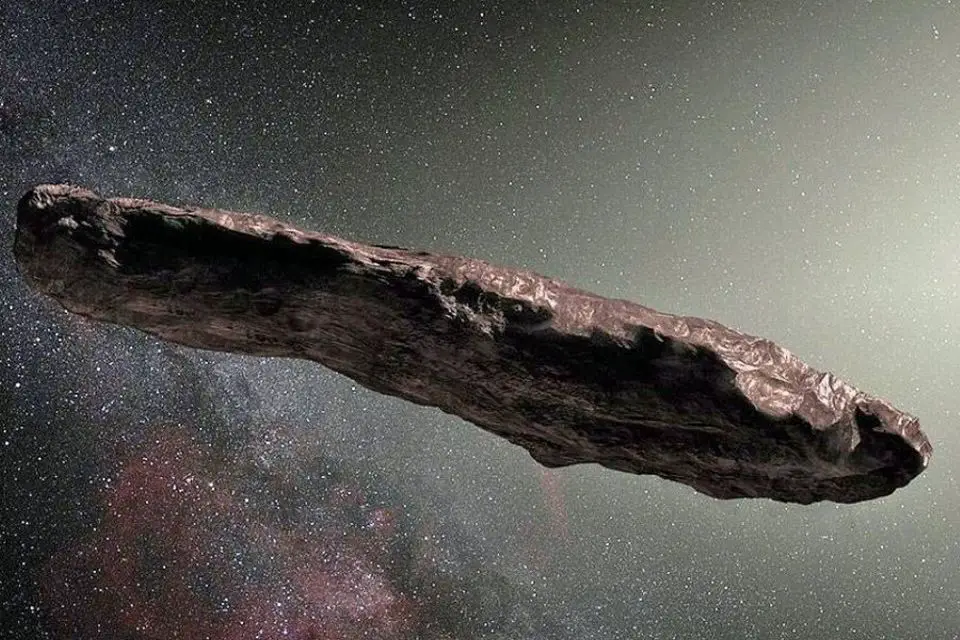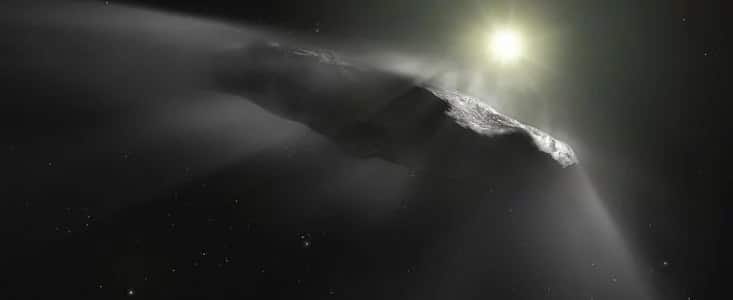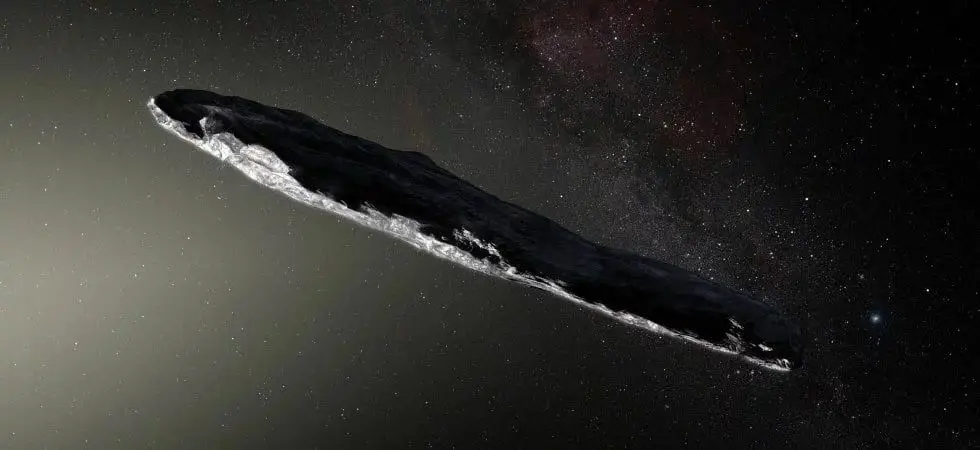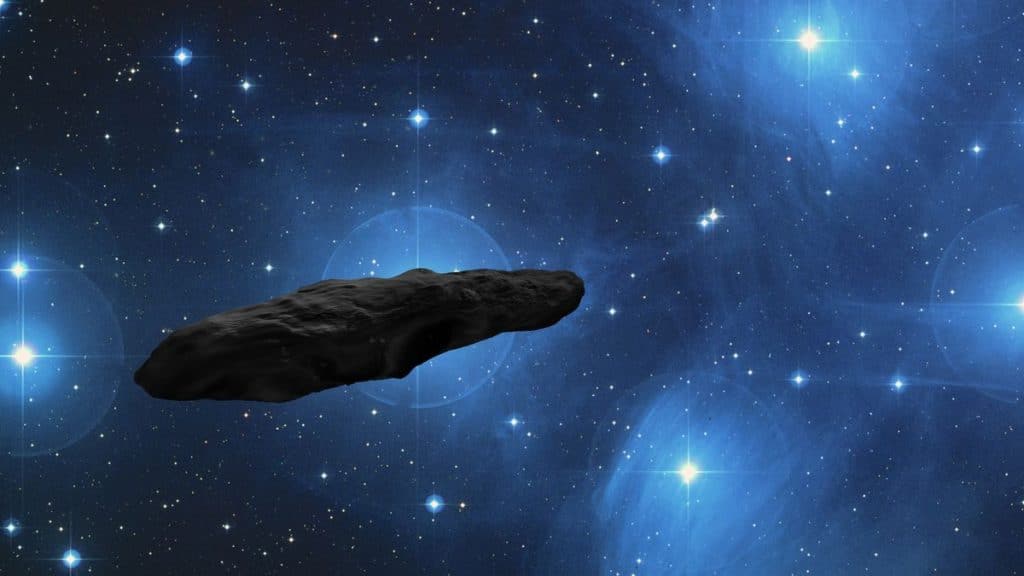1I/'Oumuamua is a rather unique asteroid traveling in interstellar space and passed close to the Sun as it passed through the inner solar system in the fall of 2017. It is noteworthy because it was the first confirmed object to come from a planetary system beyond our own.
The story of 'Oumuamua
Its name is the Hawaiian word meaning “a messenger from afar who arrives first” – very appropriate for the first interstellar object discovered in our solar system. A Hawaiian name was chosen because the telescope that spotted it – PanSTARRS-1 – is based in Hawaii.
Astronomers have defined it 1I/'Oumaumuawith the “1I” referring to the first interstellar object discovered in our solar system, although the name is now commonly shortened to 'Oumuamua.
Astronomers have been waiting for the arrival of an interstellar object like 'Oumuamua for a long time. “For decades, we have theorized that such interstellar objects exist, and now – for the first time – we have direct evidence of their existence,” said Thomas Zurbuchen, NASA's associate administrator for science.

In August 2019, a second interstellar object, called 2I/Borisov, was found in the solar system. However, Borisov looked like a normal comet, with a coma (the gaseous “head” around a comet's icy nucleus) and a tail. By comparison, 'Oumuamua was a very unusual “comet” because it lacked a coma or tail.
Interstellar objects were predicted to exist long before 'Oumuamua was discovered. However, it wasn't what astronomers expected. Small and unusually shaped, it doesn't look like a comet, yet it moves as if it were emitting gas. The main theories involve the sublimation of nitrogen or hydrogen ice. There is no evidence that 'Oumuamua was a spaceship, although some people thought so.
Interstellar objects come from other planetary systems and are thrown into interstellar space by giant collisions that destroy protoplanets or by the gravitational tides of predatory gas giant planets. As the first identified interstellar visitor, 'Oumuamua gives us a glimpse of what other extrasolar planetary systems might be like.
The form of 'Oumuamua
The form of 'Oumuamua is also notable. Initial measurements suggested that the object was shaped like a long cylinder with an aspect ratio of 10:1, meaning it was 10 times longer than it was wide.
Astronomers later revised these dimensions to about 6:6:1, which instead describes a pancake shape. Experts have seen similarly shaped objects in the Kuiper Belt beyond Neptune – in particular, a minor planet called Arrokoth, which NASA's New Horizons spacecraft flew by on New Year's Day 2019.
The shape and size measurements are based on its “light curve,” a graph that plots how the object's brightness changed over time as it rolled through space. The messenger asteroid in fact appears brighter when viewed from its wider side.
Oumuamua is also very small: it is estimated to be 115 meters long, 111 meters wide and 19 meters thick, based on the fact that it has an albedo of 0.1 (meaning it reflected 10% of sunlight) falling on it, the which is pretty standard for a cometary nucleus.
No one knows which star system it originated from. However, in 2018, astronomers tracked it along the path from which it first approached the Sun and found that the object passed close to four stars, making it closest to the red dwarf star HIP 3757 a million years ago does . Maybe it came from there, or maybe it had been wandering in Space for much longer.
The planets, asteroids, and comets in our solar system orbit the sun in closed loops. The trajectory is different: A NASA animation described how the object's path was hyperbolic, meaning it hurtled toward the Sun fast enough for solar gravity to bend its path only slightly, rather than capturing it in an orbit circular.

This means that 'Oumuamua, which travels at 26.33 kilometers per second relative to the movement of the Sun, can simply continue on, heading towards the exit door of the solar system.
Astronomers didn't spot 'Oumuamua until it made significant breakthroughs into our solar system. It reached perihelion, the closest point to the Sun, on September 9, 2017, when it came 37 million kilometers closer to our star.
It wasn't until more than a month later, on October 19, 2017, that University of Hawaii astronomer Rob Weryk discovered it in observations made by the asteroid-hunting Pan-STARRS.
At the time, 'Oumuamua was 33 million km from Earth, and its trajectory eventually took it up to 15-24 million km.
Since then, the interstellar visitor has exited the solar system, with NASA describing how 'Oumuamua was accelerated by the sun's gravitational assistance to a speed of 54.2 miles per second (87.3 km/s). Considering how small it is and how quickly it was moving away from us, the window to observe it was only a few weeks, with the Hubble Space Telescope able to track it for longer.
Its best images, such as one obtained by combining data from the Very Large Telescope and the Gemini South telescope, both in Chile and among the world's largest optical telescopes, may show it as just a speck of light.
'Oumuamua is heading towards the constellation Pegasus and is now well beyond the orbit of Neptune. It is crossing the Kuiper Belt, a ring of icy bodies near the edge of the solar system, and is now out of reach of our telescopes. It is said that it will never return to Earth.
What is 'Oumuamua?
There are two main explanations for what 'Oumuamua might be. One, by Alan Jackson and Steve Desch of Arizona State University, proposes that it is a lump of nitrogen ice. When New Horizons flew by Pluto in 2015, it observed areas, like Sputnik Planitia, that were essentially frozen lakes of nitrogen.
Jackson and Desch suggested it could be a chunk of nitrogen ice that a giant impact blasted off a Pluto-like body. The outgassing of nitrogen, sublimated by the heat of the sun, would have given the mysterious traveler the extra boost needed.
Additionally, nitrogen would have given it an albedo of 0.64, which is more reflective than a typical comet, so 'Oumuamua would have had to be smaller than previously thought to appear so faint. Jackson and Desch calculated that if it had been made with nitrogen ice, the dimensions of the object would have been only 45 x 44 x 7.5 m.

Another possible explanation, proposed by Darryl Seligman of Cornell University and Jennifer Bergner of the University of California, Berkeley, is that as 'Oumuamua traveled through interstellar space, cosmic rays may have interacted with ice on the surface, freeing the hydrogen from some of them.
water molecules and creating a supply of hydrogen gas locked in the amorphous water ice. According to Seligman and Bergner's hypothesis, when it passed near the Sun, the interstellar object was heated, although not enough to evaporate the water ice.
Instead, the heating changed the structure of the ice crystals, thus allowing the hydrogen to escape at a rate of between 10 and 800 grams per second and giving it the observed push. This would also explain why 'Oumuamua has no visible dust tail, as the dust would still have been trapped in the frozen water.
A hypothesis put forward by Harvard astronomers Avi Loeb and Shmuel Bialy proposes that nongravitational acceleration is evidence that 'Oumuamua is a spaceship with a solar sail. However, most astronomers do not support this theory.
Desch, Jason Wright of Penn State University, and Sean Raymond of the University of Bordeaux in France criticized this proposal in an article for Medium and concluded that there is no evidence that 'Oumuamua is a spaceship.
Has the mystery of 'Oumuamua been solved?
'Oumuamua is not a curious object just because of its unusual shape. It was also the first visitor ever observed from outside our solar system, giving it the unique title of “interstellar.” And, crucially, it did not behave like other comets, which are heavily composed of ice. Q
hen other comets veer relatively close to the Sun, the heat causes them to release a trail of water vapor, gas and dust, leaving behind an iconic coma or tail, which can move or push the object. But the tiny 'Oumuamua, just 115 meters long, couldn't release that much water, and astronomers couldn't see any tail.
Bergner, a chemist at UC Berkeley who researches icy space objects, and Seligman, who researches planetary science at Cornell University, propose that the comet shot hydrogen gas into space. Ultimately, this gave the comet an acceleration boost.

Space is full of radiation. And when this radiation hits water ice, it produces hydrogen, which then gets trapped on or just below the comet's surface. Finally, when sunlight hit 'Oumuamua, it released the gas.
“For a comet several kilometers in diameter, the outgassing would occur from a very thin shell compared to the bulk of the object, so both compositionally and in terms of acceleration, one would not necessarily expect this to be a detectable,” Bergner said: “But because 'Oumuamua is so small, we think it actually produced enough force to power this acceleration.”
Other solar systems certainly have accelerating icy objects as well. After all, the Universe is full of water. With increasingly larger and more advanced telescopes becoming operational throughout this decade, astronomers will likely spot many more of these foreign interstellar visitors. No, they are not aliens, and they may never be aliens. But they are fascinating travelers from distant realms in our galaxy.
#1I39Oumuamua #mysterious #journey #continues #surprise1I39Oumuamua #mysterious #journey #continues #surprise